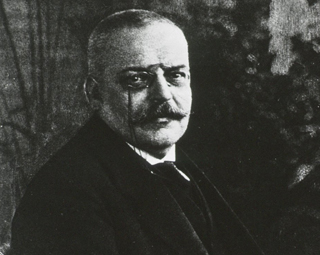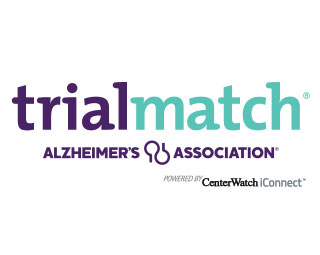Milestones
Alzheimer's disease was first described in 1906. Since then, scientists have made remarkable strides in understanding how Alzheimer's affects the brain and learning how to make life better for affected individuals and families. Below are some important milestones in our progress, including the founding of the Alzheimer's Association in 1980, which has played a key role in advancing research and raising awareness of the disease.
1980-1989: Awareness and momentum
2010-2019: Setting a national agenda
2020-present: A new era of treatment
1906-1960: First discovery

Dr. Alois Alzheimer first describes "a peculiar disease"
Alzheimer's disease named
Invention of electron microscope allows further study of brain
Development of cognitive measurement scales
1970-1979: Modern research
Founding of National Institute on Aging
Alzheimer's recognized as most common cause of dementia
1980-1989: Awareness and momentum

Alzheimer's Association founded
Declaration of National Alzheimer's Disease Month
Beta-amyloid identified
Nationwide infrastructure for Alzheimer's research established
Tau protein identified
First Alzheimer's drug trial
First deterministic Alzheimer's gene identified
1990-1999: Treatments emerge
Federal clinical study consortium launched
First Alzheimer's risk factor gene identified
First Alzheimer's drug approved by FDA

President Reagan's diagnosis announced
First World Alzheimer's Day

First transgenic mouse model announced
"Alzheimer's vaccine" successful in mice
2000-2009: Progress and hope

National Alzheimer's Disease Genetics Study begins

First report on Pittsburgh Compound B (PIB)

Neuroimaging Initiative (ADNI)

Alzheimer's & Dementia® journal launched
The Alzheimer's Association launches Alzheimer's & Dementia®: The Journal of the Alzheimer's Association to further support a global, interdisciplinary exchange within the Alzheimer's research community.

Healthy Brain Initiative launched
The Alzheimer’s Association and the U.S. Centers for Disease Control and Prevention launch the Healthy Brain Initiative with the publication of A National Public Health Road Map to Maintaining Cognitive Health. The Road Map advances 44 science-based actions emphasizing primary prevention of cognitive impairment. The goal of this initiative is to maintain or improve the cognitive performance of all adults.

International Society to Advance Alzheimer's Research and Treatment formed

International Conference on Alzheimer's Disease becomes an annual event
With accelerating progress intensifying the need for global information exchange, the Alzheimer's Association International Conference on Alzheimer's Disease® (AAICAD®) becomes an annual event.

Effort to standardize biomarkers begins
2010-2019: Setting a national agenda

Alzheimer's researchers unite to raise awareness and concern
Dozens of Alzheimer's researchers unite with the Alzheimer's Association for an "Alzheimer's Breakthrough Ride®," a 66-day bike relay across America to raise public and congressional awareness of the urgent need for more federal funding to support the search for effective Alzheimer's treatments.

Alzheimer's clinical trial database established
The Alzheimer's Association and its partners in the Coalition Against Major Diseases (CAMD) released a first-of-its kind database of 4,000 patients who participated in 11 pharmaceutical industry-sponsored clinical trials of Alzheimer's treatments. The combined data, accessible to any qualified researcher, will offer unprecedented power to understand the course of Alzheimer's.

Alzheimer's Association TrialMatch® launched
The Association launches TrialMatch®, a free, easy-to-use clinical studies matching service that connects individuals living with Alzheimer's disease, caregivers, and healthy volunteers with current research studies. Stakeholders unanimously identified building awareness of research studies and increasing enrollment as key strategies to accelerate treatment development.
An influential model of biomarker changes during Alzheimer’s disease progression is first published
A group of researchers publish a working model relating changes in Alzheimer’s biomarkers to disease stage and symptom severity. The model has become a focal point of research into Alzheimer’s biomarkers, and is revised periodically to account for new research.

President Obama signs National Alzheimer's Project Act (NAPA) into law
Groundbreaking legislation establishes our first-ever framework for a national strategic plan to address the Alzheimer's crisis and to coordinate our response on multiple fronts, including research, care and support.
New criteria and guidelines for Alzheimer's disease diagnosis
Three workgroups convened by the Alzheimer's Association and the National Institute on Aging issue updated criteria and guidelines for diagnosing Alzheimer's disease and propose a research agenda to define a new preclinical stage.

Annual assessment for cognitive impairment for all Medicare Beneficiaries implemented as part of Annual Wellness visits
The Centers for Medicare and Medicaid Services implement Annual Wellness Visits for all Medicare Beneficiaries under the Patient Protection and Affordable Care Act. A mandatory part of the Annual Wellness Visit is an assessment for detection of cognitive impairment.

First major clinical trial for prevention of Alzheimer’s disease is initiated
A multinational research consortium, the Dominantly Inherited Alzheimer Network, launches the first major clinical trial testing drug therapy to prevent the onset of Alzheimer’s disease symptoms in people who inherited an autosomal dominant mutation putting them at high risk for the disease.

International Genomics of Alzheimer’s Project (IGAP) researchers identify new genetic risk factors for Alzheimer’s disease
Hundreds of researchers from around the world collaborate to perform a meta-analysis of genome-wide association studies intended to identify genetic variations linked with an increased risk for Alzheimer’s disease. The collaboration revealed 20 genetic variations associated with increased risk, 11 of which had not been linked with Alzheimer’s before. Some of the newly identified genetic variations are thought to be specific to the immune system, adding to mounting evidence of a role for the immune system in Alzheimer’s disease.

Rates of death caused by Alzheimer’s disease found to be much higher than reported on death certificates
Researchers at Rush University find that the annual number of deaths attributable to Alzheimer’s disease in the U.S. among people at least 75 years old is about 500,000, much higher than the number reported on death certificates (>84,000).

Alzheimer's Accountability Act signed into law
The Alzheimer's Association led the fight for this revolutionary law that allows scientists at the NIH to submit an annual research budget directly to Congress.
Historic funding increase
Historic $400 million increase for federal Alzheimer’s disease research funding signed into law, bringing annual funding to $1.4 billion.

Dementia Care Practice Recommendations published
Alzheimer’s Association released Dementia Care Practice Recommendations aimed at helping professional care providers deliver optimal quality, person-centered care for those living with Alzheimer’s and other dementias.
International consortium established to improve care and psychosocial outcomes
The National Institutes of Health (NIH) awarded the Alzheimer’s Association $1.34 million over five years for an international research network, Leveraging an Interdisciplinary Consortium to Improve Care and Outcomes for Persons Living with Alzheimer’s and Dementia (LINC-AD), to improve care and psychosocial outcomes for individuals living with dementia.
Bill Gates helps fund Part the Cloud Research Grant Program
Bill Gates joined the Alzheimer’s Association’s Part the Cloud global research grant program with a $10 million award that will stimulate an additional $20 million in funding to the Alzheimer’s Association.

Alzheimer’s funding reaches all-time high
A $350 million increase for Alzheimer’s and dementia research funding at the National Institutes of Health (NIH) was signed into law, bringing the annual funding to $2.8 billion. An additional $10 million was also approved for the BOLD Infrastructure for Alzheimer’s Act.
2020-present: A new era of treatment
Aducanumab approved for treatment of Alzheimer’s disease
Aducanumab (Aduhelm®) received accelerated approval as a treatment for Alzheimer's disease by the U.S. Food and Drug Administration (FDA). This is the first FDA-approved therapy to address the underlying biology of Alzheimer's disease. (Aducanumab will be discontinued on Nov. 1, 2024. Please connect with your provider on treatment options.)
Lecanemab receives traditional approval for treatment of Alzheimer's disease
Lecanemab (Leqembi®) received traditional approval as a treatment for early Alzheimer's from the FDA. It is the first traditionally approved treatment that addresses the underlying biology of Alzheimer's and changes the course of the disease in a meaningful way for people in the early stages.
CMS decides to cover PET imaging for Alzheimer's disease diagnosis
A policy change by the Centers for Medicare & Medicaid Services (CMS) expanded coverage of brain amyloid positron emission tomography (PET) imaging for the diagnosis of Alzheimer's disease, making a valuable tool more accessible across the country.

Alzheimer's Association announces milestone $100 million research investment
The Alzheimer's Association, the world's largest nonprofit funder of Alzheimer's and dementia research, invested a milestone $100 million in research initiatives in 2023, the largest single-year total since the organization's founding in 1980.
